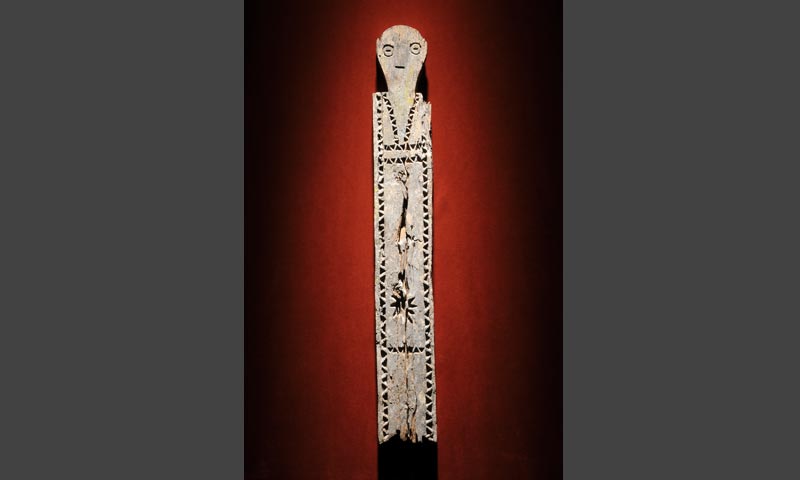How can museums thoughtfully represent art that was never intended to be displayed in the first place? Should a museum contextualize the art it chooses to display, or does this unintentionally create an “othering” of one’s culture or heritage? Do museums have a responsibility to cast meaning onto an object, or should the art speak for itself? As a second year Master’s candidate in art history and museum studies with a focus in the politics of display concerning non-western art, these are just some of the many critical questions I regularly grapple with and consider. Currently, I am confronting these challenging notions in a seminar called, “Who Owns the Past?” Each week, my classmates and I discuss heritage in relation to nationalism, colonization, and questions of ownership while examining cultural property case studies (e.g. the ongoing Parthenon Sculptures debate).
The so-called ‘universal museum’ was the topic of discussion in our last class meeting. Universal museums, sometimes referred to as ‘encyclopedic museums,’ showcase a wide breadth of collections from around the world. Examples of such institutions include the British Museum, the Louvre, the Getty, the Metropolitan Museum of Art, and the Museum of Fine Arts, Boston, places where a visitor can encounter everything from Japanese narrative handscrolls and ancient Roman coins to West African textiles or contemporary sculptures.
Although one could argue that universal museums promote cross-cultural learning and engagement by providing visitors with a multitude of diverse art forms all under one roof, these institutions have also been harshly criticized for several reasons. First, for the way they defend their ownership of objects acquired in questionable ways: in 2002, for instance, nineteen of such institutions released a “Declaration on the Importance and Value of Universal Museums,” a joint statement that argued universal museums should retain other nations’ cultural patrimony (objects often subject to repatriation debates) because “museums serve not just the citizens of one nation but the people of every nation.” Universal museums have also been critiqued for their location; most are predominately in the West. Finally, rather paradoxically, universal or encyclopedic museums are in fact nationalistic. Their collections showcase objects from places ruled by the West, reinforcing imperial messages.
Considering my classmates’ and I’s critiques of universal museums, our professor asked us if we should defend them. With such colonial baggage, what’s left to argue in favor of the universal museum? One of my colleagues, in playing devil’s advocate for this conversation, asked the class to consider if we are perhaps “over-villifying” the universal museum. In its pursuit to provide access and educational resources to the public, is the mission of the universal museum still inherently good? We did not come up with an answer or solution, instead fixed on the neo-colonial rings that universal museums still perpetuate.
As it turns out, a prominent national museum in Europe may offer a solution. Recognizing the “darker side of a country’s history,” the Rijksmuseum – Netherlands’ national museum in Amsterdam – announced it will open an exhibition meant to bring light to the country’s history of slavery. This exhibition, set to open in the fall of 2020, will be the museum’s first show dedicated entirely to slavery. According to the Rijksmuseum website, the “exhibition testifies to the fact that slavery is an integral part of our history, not a dark page that can be simply turned and forgotten about. And that history is more recent than many people realize: going back just four or five generations you will find enslaved people and their enslavers.” I think an exhibition such as this one is a strong step towards creating a more honest narrative in the canon of art history, and I hope more institutions follow suit.
What are your thoughts on the so-called universal museum? Do they continue to confirm prejudice or promote tolerance? Where do we go from here?




